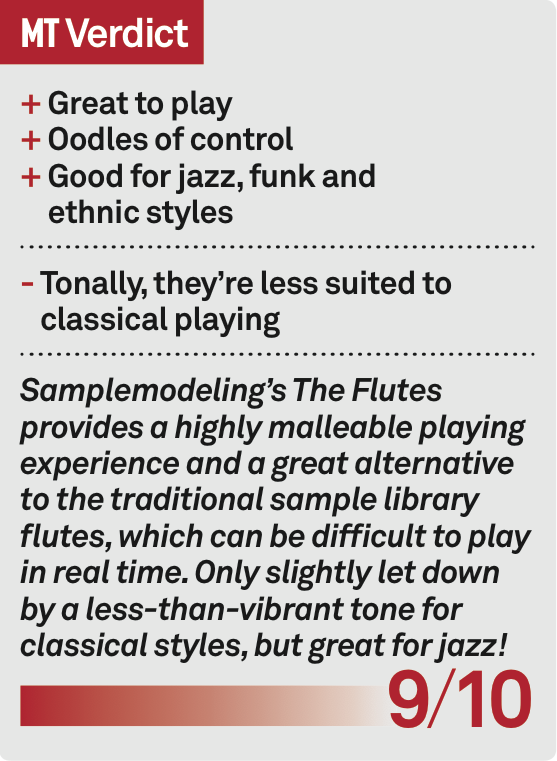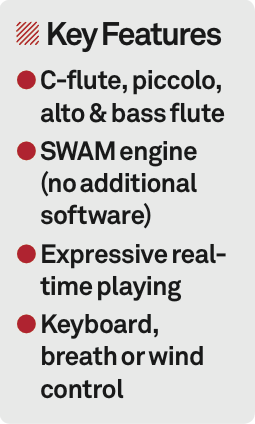Samplemodeling The Flutes Review
Samplemodeling has a reputation for creating realistic virtual instruments. So how do The Flutes shape up? Keith Gemmell takes a deep breath… Details Price £228 Contact via website Web www.samplemodeling.com Minimum System Requirements 1.6GHz Core2Duo Windows XP, 7, or Vista Mac OS X 10.6 to 10.9 Amazon.co.uk Widgets Virtual instruments usually come in one of two distinct […]

Samplemodeling has a reputation for creating realistic virtual instruments. So how do The Flutes shape up? Keith Gemmell takes a deep breath…
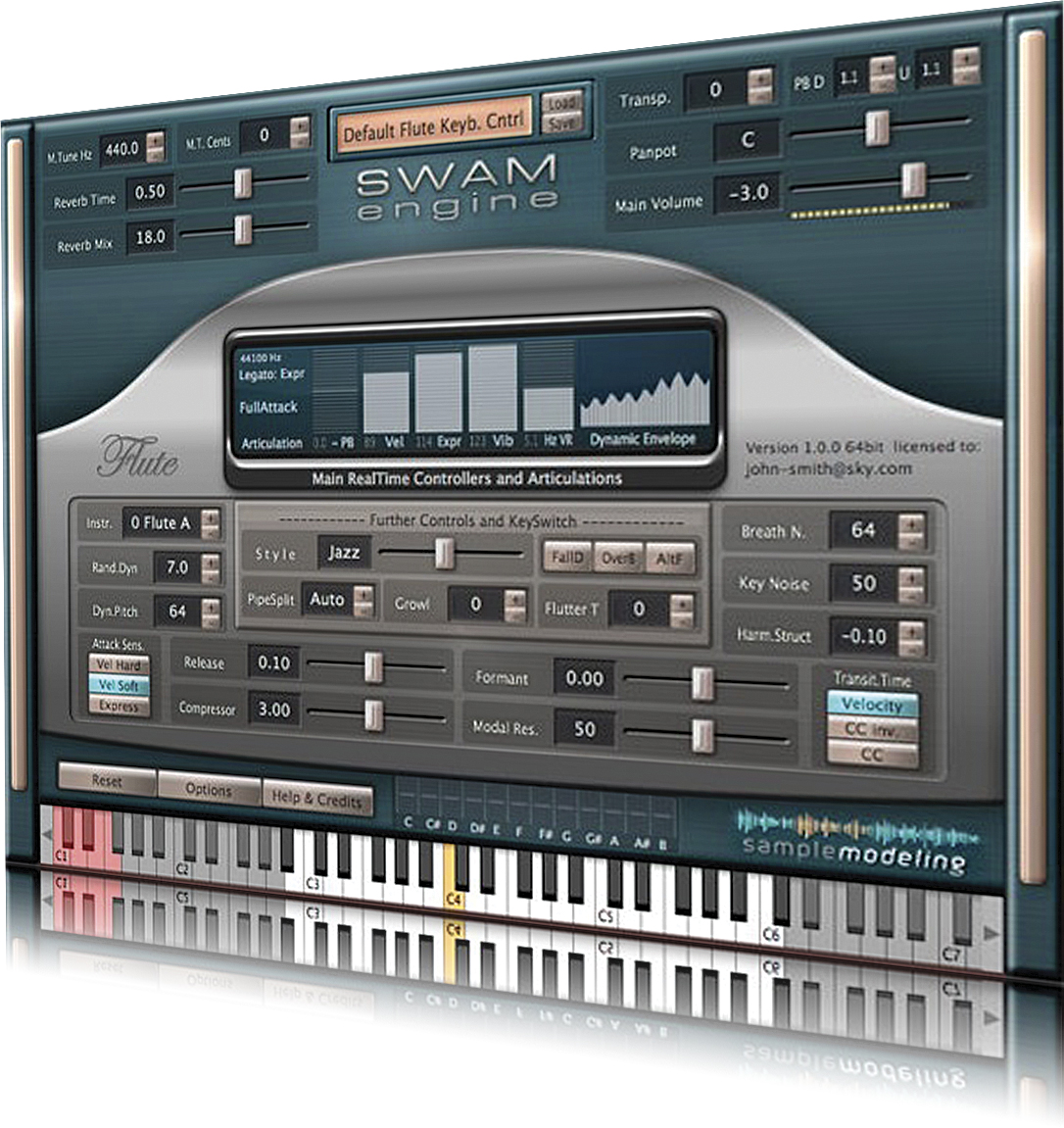

Details
Price £228
Contact via website
Web www.samplemodeling.com
Minimum System Requirements
1.6GHz Core2Duo
Windows XP, 7, or Vista
Mac OS X 10.6 to 10.9
Virtual instruments usually come in one of two distinct types, those that use samples and those that employ synthesis. The former provides a faithful reproduction of the recorded instrument along with the articulations and expressions of the performer. Unfortunately they are not always easy to play in real time, and a fair amount of editing is required after a take to reshape the performance data. Synthesizers, on the other hand, are much more expressive but often fall short when it comes to producing a purely realistic sound.
In 2008 Samplemodeling took a different route and developed a range of brass instruments for the Kontakt platform fusing sampling modulation and AI MIDI processing techniques entitled Harmonic Alignment Technology. A saxophone set soon followed with yet another approach, Synchronus Wave Triggering. As this technique was not so well suited to Kontakt, Samplemodeling developed their own platform, SWAM (Synchronus Wavelength Acoustic Modeling), a sample-based engine with technical solutions derived from physical modeling. Their clarinet, saxophone and double reeds collections all use SWAM, as does this latest release, The Flutes. Comprising C-flute, piccolo, alto and bass flutes, they are supplied as both 32-bit and 64-bit plug-ins.
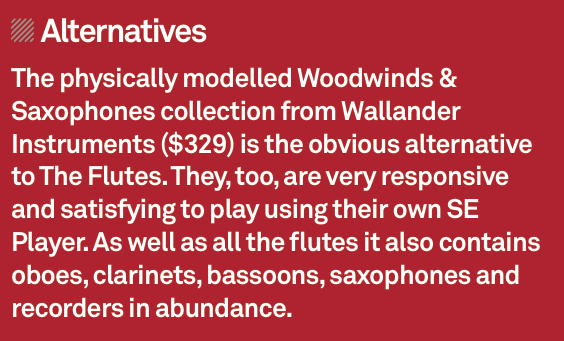
Five live
Each instrument can be loaded in five different pre-configurations, two classical, along with jazz, funk and ethnic, each with a continuous parameter slider. Changes to the timbre correspond to either different instruments or mic placements. Articulations are automatic and respond to the player, but there are keyswitches for overblowing, falls, alternative fingerings and micro-tuning.
These instruments are designed to be played in real time, and a decent keyboard controller with plenty of knobs and sliders is recommended. An expression pedal is a good idea, too, but not essential. Alternatively a breath controller such as the new TEControl (www.tecontrol.se) or a wind controller can be used. The SWAM player has default settings for all three. The instruments load quickly and are instantly playable, provided that the expression control is moved and recognised first. They’re remarkably pliable and very responsive straight out of the box with an excellent centre display that shows exactly which real-time articulations and controllers are being triggered.
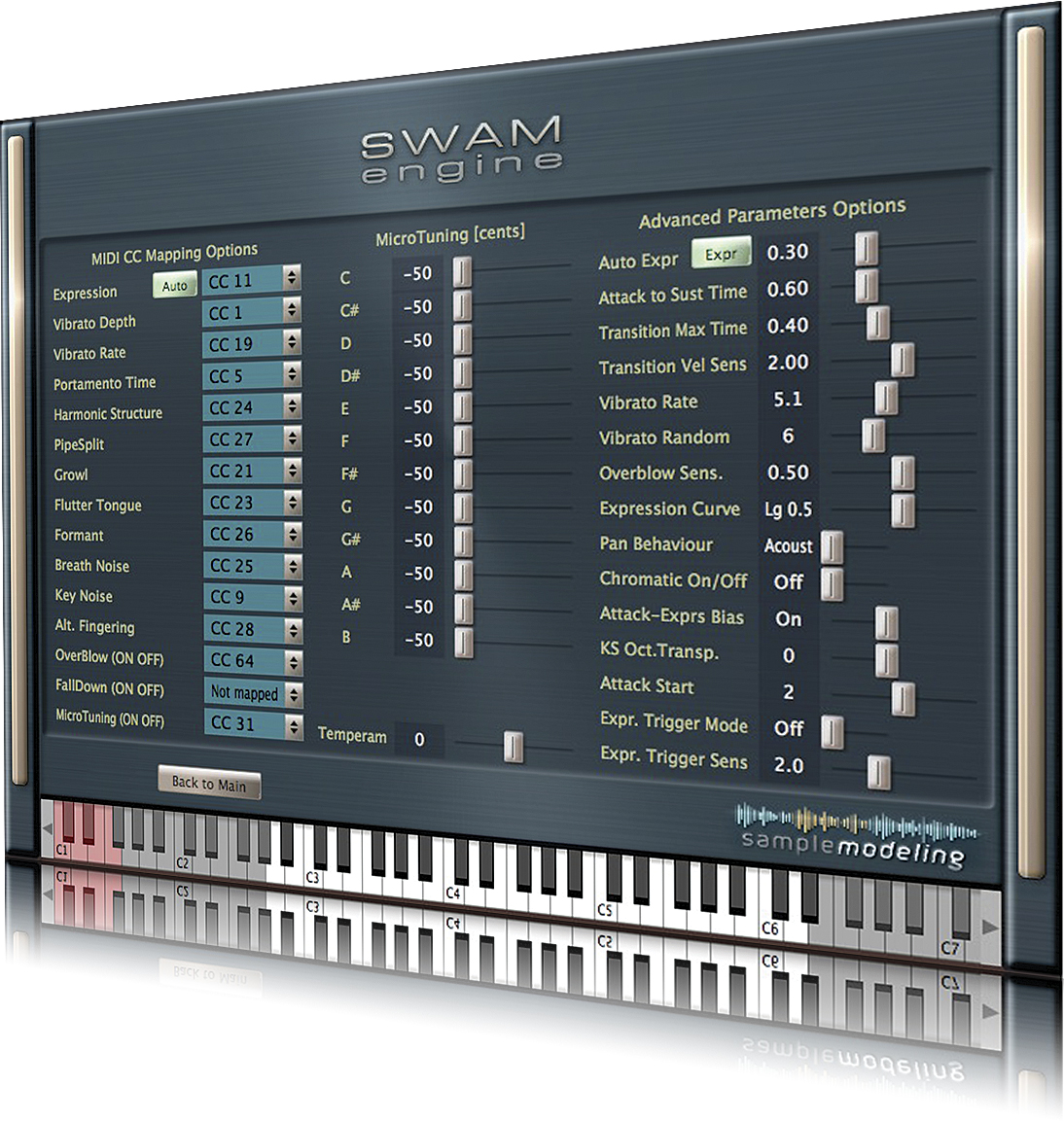
The remainder of the main GUI is well laid out and implemented with all the bread and butter controls you would expect at the top (volume, pan, tuning and so on) along with reverb time and mix sliders. As the flutes are dry this feature enhances the playing experience adequately, although when recording it’s probably best turned off to enable an external high-quality alternative to be applied afterwards. The lower half of the GUI contains further controls for sound shaping such as breath and key noise, flutter, growl, overblowing and falls.
Open the Options page and there’s a wide range of advanced controls for fine tuning legato transitions, vibrato rates, randomisation, portamento and many more.
Blown away
The playing experience and the results are excellent and far superior to using a sample library flute, especially in a solo context as opposed to orchestral woodwind section use. In that respect a sample library might be a better bet because in a classical setting, tonally we found these flutes less pure than their sample library competitors. It’s no big deal, but one way to describe it might be a slight lack of that silvery quality typically associated with an expensive metal flute. That said, we obtained decent results on a number of classical snippets, and for pure expressiveness, especially in the jazz, funk and ethnic genres, they’re a formidable force.
From a flute player’s perspective this is about the closest virtual instrument playing experience compared to a real flute that we’ve come across. Of course they can also be programmed without any real-time playing as well, but you’ll miss out on much of the fun.
